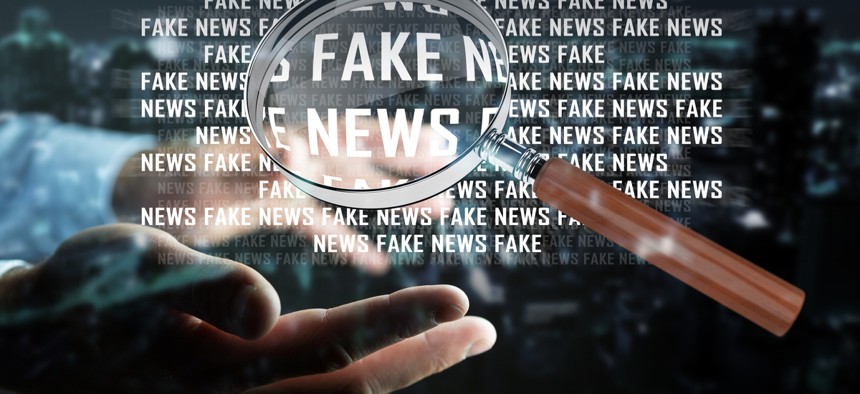Here’s How to Counter Fake News During a Disaster

sdecoret/Shutterstock.com
A Homeland Security Department advisory group wants to help emergency responders control the social media conversation.
State and federal emergency responders should have plans ready to go to counter rumors, misinformation and fake news in the wake of disasters, according to a new white paper from a Homeland Security Department advisory group.
Those plans should include actively correcting misinformation on Facebook and Twitter with hashtags such as #rumor and #mythbuster, according to the draft report, which the Homeland Security Science and Technology Advisory Committee approved for final publication Thursday.
Emergency responders should also engage with popular social media “influencers” in the area and with local radio and broadcast media who can amplify facts and correct fake information, the report states.
Emergency response agencies should also train local volunteers to spot rumors and fake information online and, when appropriate, to respond to it, the white paper states.
The advisory group consults with Homeland Security’s Science and Technology Directorate on issues ranging from cybersecurity and engineering to the best ways to leverage technology from other federal agencies and the private sector.
The white paper follows dozens of natural disasters during which false information ran amok online, some of it malicious and some of it simply mistaken.
The report cites numerous instances, for example, in which photos from old disasters were recirculated during new ones and gave a false sense of the scale or scope of the disaster.
In other cases, online vandals hijacked disaster-focused hashtags to spread misinformation or to push an agenda unrelated to the disaster.
After a 2014 earthquake near Napa, California, for example, some Twitter users hijacked the #NapaQuake hashtag to post images of dead U.S. soldiers and slogans supporting the Islamic State, the white paper notes.
In other cases, hackers and spammers have used disaster-related tweets and hashtags to spread malicious links containing malware.
The advisory group approved a draft version of the report with minor changes. The final version will be posted in about a month.
Other advice in the white paper includes:
- Get correct information out before misinformation can spread, including by prepping graphics and photos that can be quickly retrofitted for a particular disaster.
- Share new information by updating a single Facebook post or tweet rather than beginning new threads.
- Use the pinning feature to keep vital information at the top of your Twitter feed.
- Focus on correcting misinformation that’s spreading rapidly and being retweeted or shared locally. If agencies use their tweets and Facebook posts to correct information that’s not spreading widely they risk accidentally amplifying the information.
- Identify handles that spread misinformation in advance and track them during disasters.
NEXT STORY: Twitter Is Introducing New Rules ... Again






